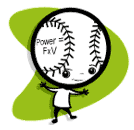Because of the high incidence of elbow injuries that is currently plaguing youth pitchers, we have to look at all possible contributing issues and be aware of all situations that may be putting our pitchers at risk. One of these controversial issues is the pitcher also playing the position of catcher.
My colleagues at the American Sports Medicine Institute felt so strongly that the combination of pitching and catching was a bad match, that it was on their recommendation that the Little League changed the rules in 2008 to say that a pitcher being removed from a game could not be put into a game on that same day as a catcher. While that was the only change they made, leaving unanswered questions and issues about play on the following day or on any other day for that matter, at least a change in the right direction was made.
I know that as parents and coaches, you want to do the right thing. I also know that we want the boys to get as much exposure to playing as possible. Unfortunately, with the climate of youth baseball today and the lack of a real off-season, decisions may have to be made from a more serious perspective. Making an informed decision about some of the most pressing issues is the best that you can be expected to do and it is my job to give you the food for thought that can help guide you.
Here are some issues that you should contemplate and possibly act on when it comes to the pitcher as a catcher…a marriage that really isn’t made in heaven.
- The pitcher and catcher are the two positions on the team that throw the highest volume of balls. Is it a good idea to use the same guy for both of those positions?
- The catcher actually throws more throws than a pitcher, some of which have as much intensity as the pitcher.
- When he does throw to a base, in addition to the speed, he has to use varied arm slots, i.e., whatever is necessary to get the ball to its destination quickly.
- We usually just think of a pitcher’s pitch count. What about a total “throw” count if the pitcher pitches on Saturday and catches on Sunday?
- As far as playing the position of catcher the day after pitching: even though the rules do not prohibit it, remember, the pitcher’s shoulder is in repair. Interruption to recovery can cause fatigue or contribute to a poor pitching performance the next time on the mound.
- Every young pitcher has to learn good pitching mechanics and in order to do this, he must practice consistently. An appropriate arm angle and consistent arm slot is mandatory for solid mechanics and playing a second position that requires a high volume of throws with different mechanics may create “physical” and “motor” confusion for the pitcher.
- At the youth level, playing more than one position is developmental for the boy as well as necessary within the team structure. Since all the other positions have less throwing requirements than the catcher, there may be another position that blends better with pitching.
- The trauma that occurs inside the body is an invisible entity. It may take years for it to show-up as an injury. But when it does show-up, it is usually from an accumulation over time.
The most important point I want to make is the following: the pitchers that are at the greatest risk of injury are the pitchers that are of a higher caliber. The pitcher who plays as a catcher is doing so because he is good in both positions as is playing at a higher level. This means that his risk and vulnerability are doubled.
While I know this throws a wrench into a lot of things, including the fun that the player probably has playing both positions, always remember… elbow and shoulder problems are not fun and it is just a matter of time before something happens. Do all you can to get a jumpstart on the rules that I know are probably right around the corner.

